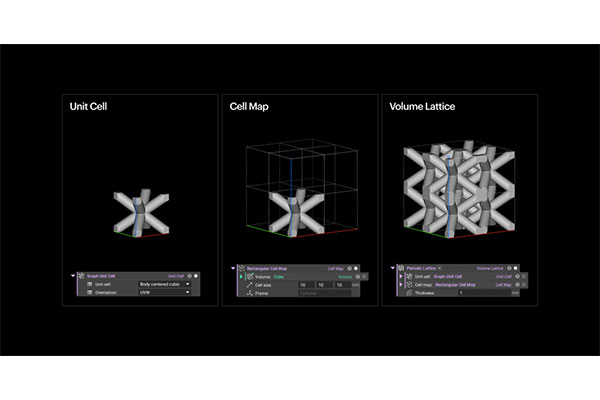nTopology Unveils New Latticing Technology
The new latticing tools, according to the company, are easy to use, faster than previous generation offerings.

The new tools separate the lattice generation process into three fundamental components: unit cell, cell map, and lattice parameters. Image courtesy of nTopology.
Latest News
June 7, 2022
nTopology has released its third-generation latticing technology, an advanced lattice generation tool available.
The new latticing tools, according to the company, are easy to use, faster than previous generation offerings, and offer greater control over complex lattice structures. They also provide the basic infrastructure for the features coming up next.
The new latticing technology release includes 37 blocks that have been in development. The updates implement feedback from the nTop community, and prepare documentation for the transition.
The goal was to make it as easy as possible for new nTop users to access the new latticing tools from the moment they start using the software.
The company separated the lattice generation processes into three fundamental steps: select a unit cell, define the cell map and control lattice parameters (such as thickness).
Mastering these steps makes it faster and more intuitive to learn how to apply advanced latticing and design for additive manufacturing techniques later.
For existing nTop users, the goal was to make the transition to the new latticing technology streamlined.
In the updated Lattices tab, there are three new easy-to-use blocks that enable users to quickly replicate the outputs of workflows using the old latticing technology. Use these blocks to transition existing workflows to the new latticing technology at your own pace.
Fast Lattice Generation
When transitioning your workflows to the new latticing technology, you may notice a performance increase, especially when working with lattices with a high beam and unit cell count.
In one benchmark example, a lattice with 50,000+ unit cells used to take 45-60 seconds to generate on a well-equipped laptop. Now, it rebuilds in 1-2 seconds.
Sources: Press materials received from the company and additional information gleaned from the company’s website.
Subscribe to our FREE magazine, FREE email newsletters or both!
Latest News
About the Author
DE’s editors contribute news and new product announcements to Digital Engineering.
Press releases may be sent to them via DE-Editors@digitaleng.news.






